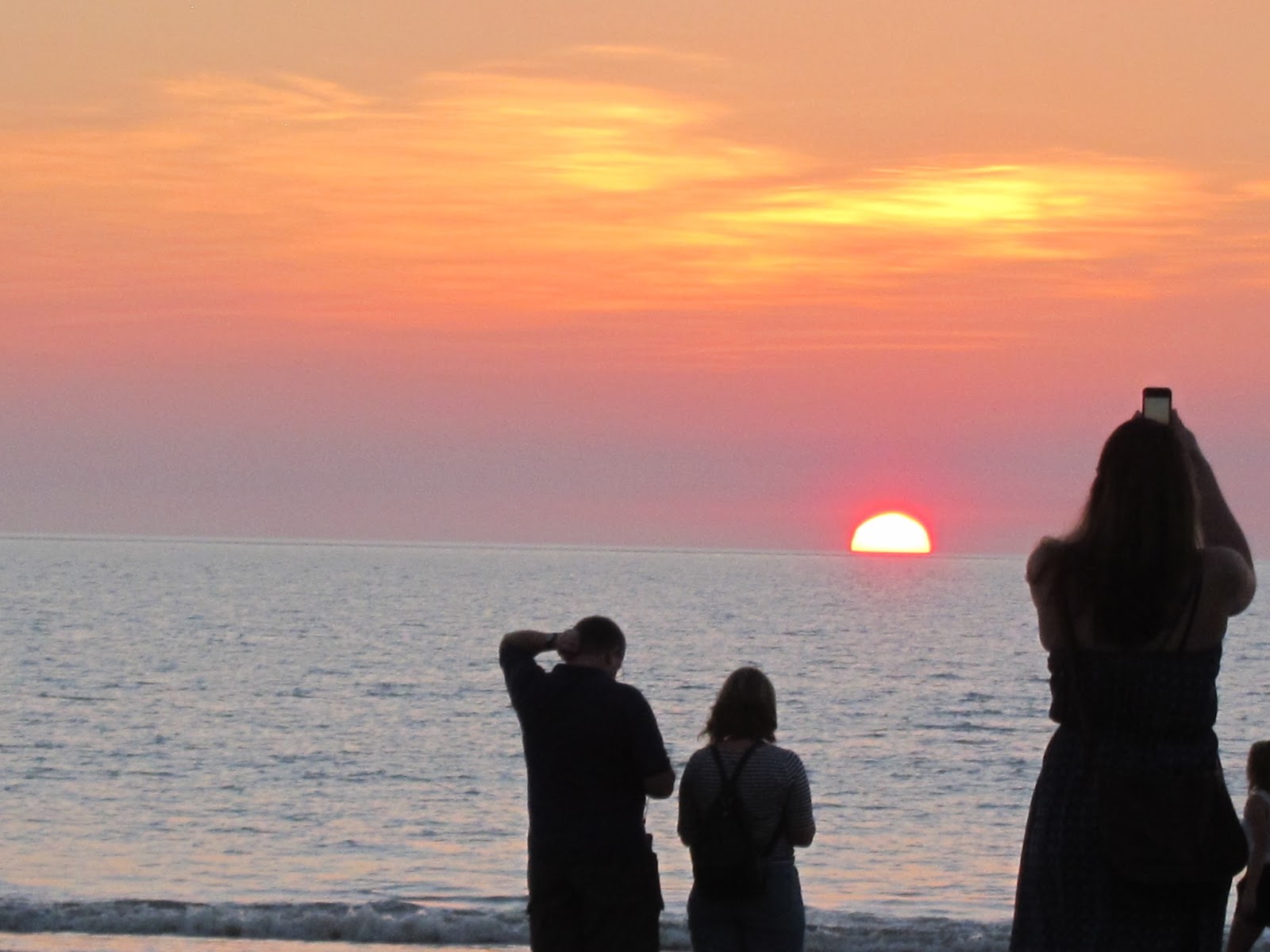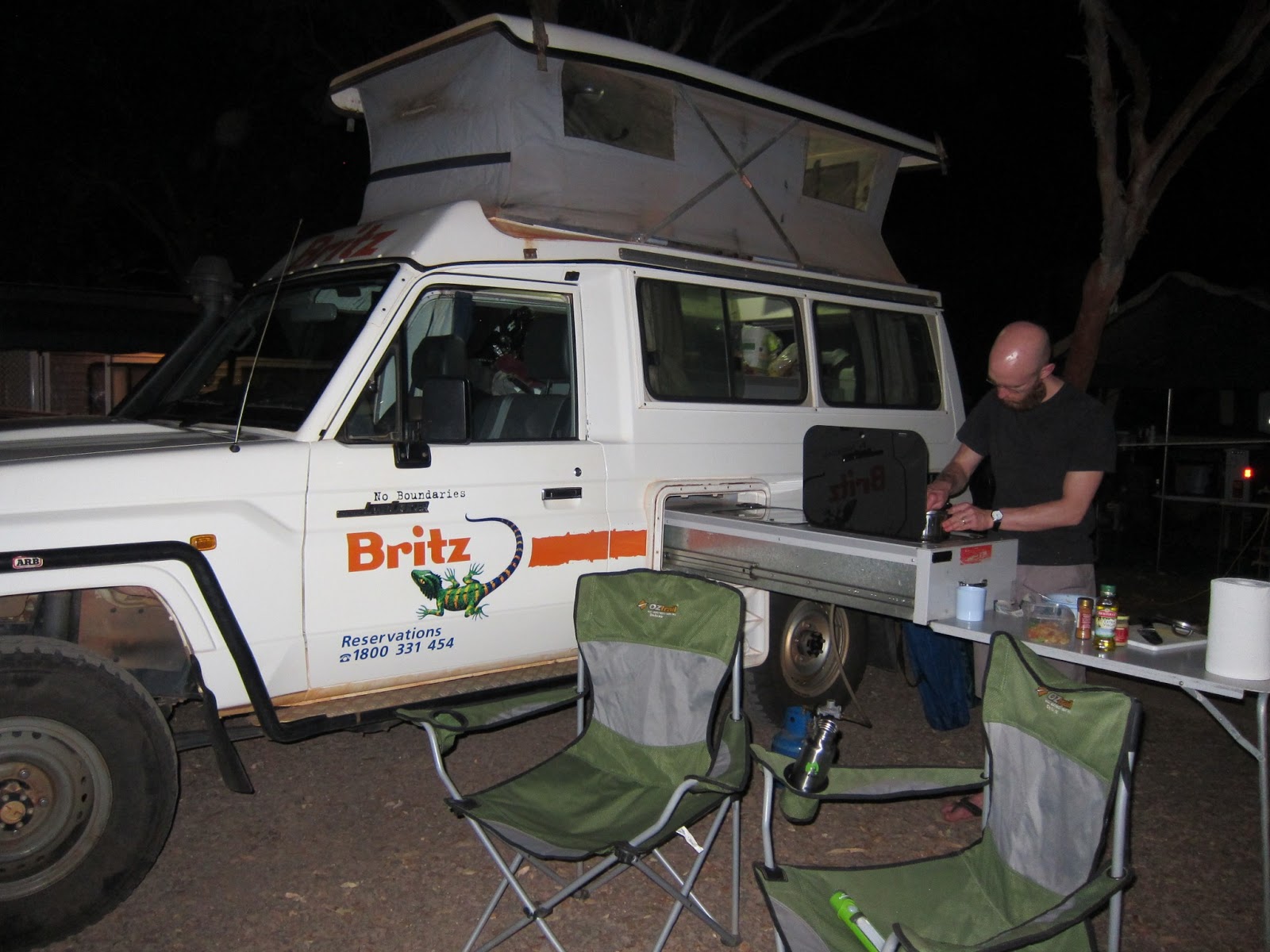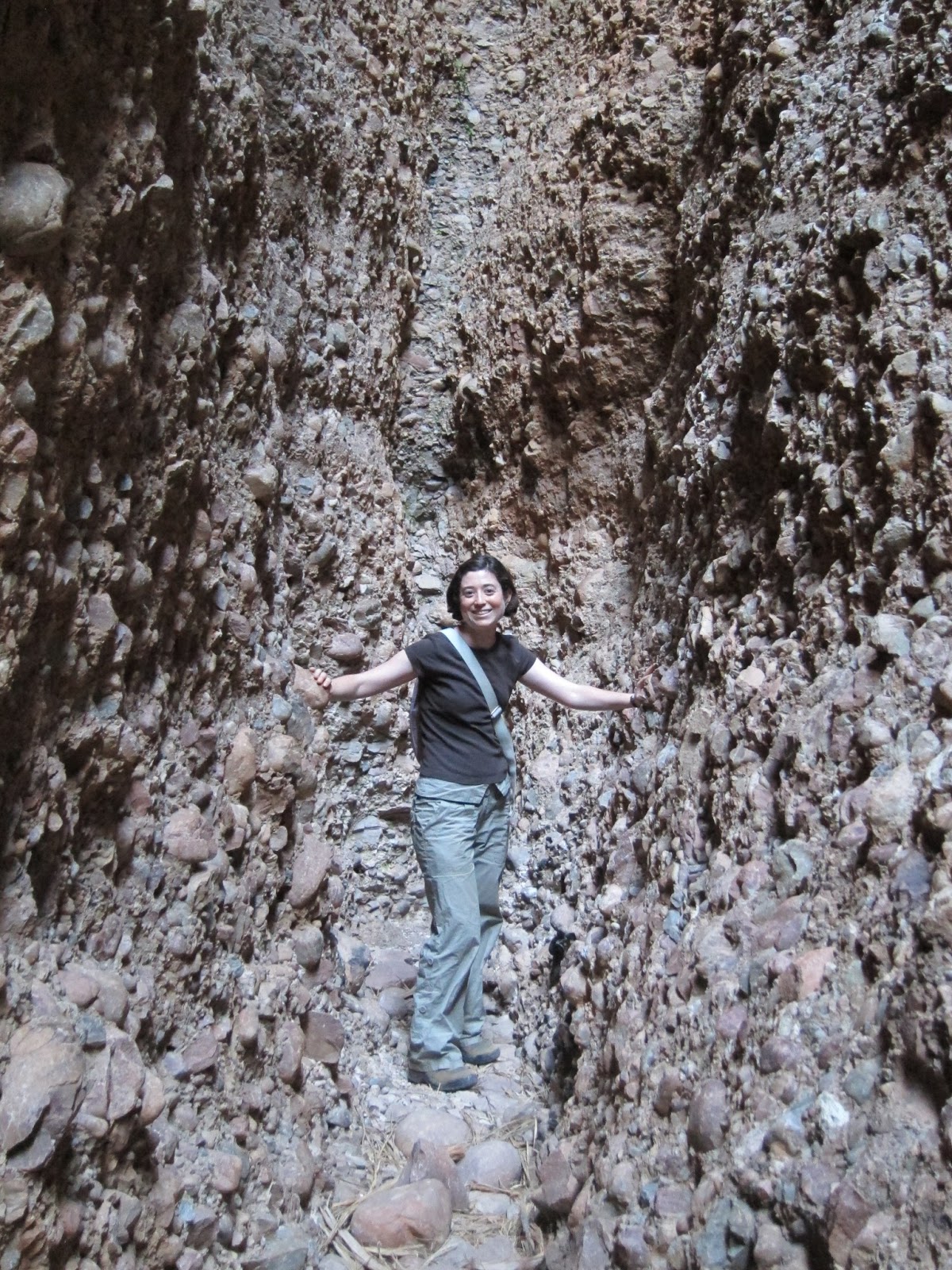Darwin ("Dah-win")
Darwin is the capital of the Northern Territory. Compared to the southern cities, it felt much more like a tropical outpost mixed with a resort.
We just stayed there one night, and the highlight was going to the Mindil Beach Market:
We ate some delicious Indonesian food and a tropical smoothie just before the sun starting setting.
On the right here, you can see the stand for Mick's Whips. Mick (or his representative) did demonstrations with his whips, snapping them in rhythm.
Kakadu
Our next target was going to Kakadu National Park - a few hours southeast from Darwin. The park is huge, though the majority of it is flat and relativity uneventful woodland like this:
Warning signs were regular once one got close to water:
Despite the sign, we didn't see any 'wild' animals there, nor did we find out why "wild" was in quotes.
We did see some incredible rock art of animals, however:
The rock formations in Kakadu are made from sandstone that is almost 2 billion year old.
There were also some unusual trees with pretty flowers:
Notice how the ground looks burnt? We'll talk more about that later...
Katherine
The next destination was Katherine Gorge. Just before the gorge, we stopped in at Edith Falls. It mainly boasted a popular non-saltwater-crocodile infested swimming hole, which was nice and refreshing in the heat:
On the lower right, you can see other people in the water.
We arrived at the campgrounds in Katherine Gorge just before sunset, which gave us a chance to finally see some local wildlife in action.
There were trees full of bats just waking up. We could tell, because they were LOUD!
We also came across an Agile Wallaby and a bird having dinner together peacefully:
After our wildlife walk, we were hit with a magnificent sunset:
That night, we had a relaxed evening in the campgrounds. In case you were wondering what we were travelling around it, here's a typical view from that night:
Each night, we popped the top up, which became our sleeping loft. The stove and table were pulled out the side of the truck. It wasn't overpoweringly space-y inside, but being able to cook and eat outside made things pretty easy.
In the morning we took a beautiful walk to actually get to see Katherine Gorge. It was hard to get a good shot, but this should give you some sense:
Road to Western Australia border
From Katherine, our next destination was just over the border into the state of Western Australia. It was a long day's drive, but as we went we could gradually see the landscape change. One of the big changes was the appearance of the iconic Boab trees, along with red-rocked cliffs.
Boab trees are basically water tanks with a few branches tagged on. They're the perfect design for a hot landscape that gets heavy rain half the year and none the rest.
There was a quarantine check going over the state border and we had to declare that we had no fresh fruits and veggies! They let us in with some raisins/sultanas, though. Here were some welcome signs:
Lake Argyle
The night after crossing the state border, we stayed at Lake Argyle. It's a man-made lake, but impressive nonetheless, especially in the late-afternoon sun:
Bungle Bungles! (Purnululu National Park)
Our next destination was the Bungle Bungle range, officially known as Purnululu National Park. It's most famous for it's beehive-shaped domes with orange and black stripes, but we found that there was much more there. The entrance to the park was after about 50km (which took about 1.5 hours) on a rocky dirt road.
This was our first dirt road of the trip (what we needed the 4WD for!):
Our first hike in the park was through Echidna Chasm. This was in the northern part of the mountain range, which was quite different than the southern part where the domes were.
Here you can see some evidence of the orange and black rocks, but also the rare Livitsona Palms. The trail was mainly walking through a dry creek bed and the palms against the red cliffs. We felt like we were on some other planet or in a strange oasis:
There was also evidence of wildlife just next to the trail: a bowerbird nest.
The bird wasn't home.
The chasm became progressively narrower and darker. Here's Naomi at the end:
That evening, we watched the effects of the sun setting reflecting on the mountains near our camp ground:
The next morning we went to the other end of the park to finally get to see the Bungles.
Here's the approach. The lumpy things are Bungles:
Here is a Bungle up close, with a termite hill "growing" out of it:
More views of Bungles:
Like a lot of Australia, the place had a strange mix of harshness and vulnerability. The landscape was definitely rough: desert that gets blasted by rain regularly. But the Bungle formations themselves are, we learned, very fragile: the black stripes are only formed on the surface by bacteria, and are easily destroyed.
Coming up next time: a much longer dirt road, more gorges, and (yes) wild crocodiles.






























No comments:
Post a Comment